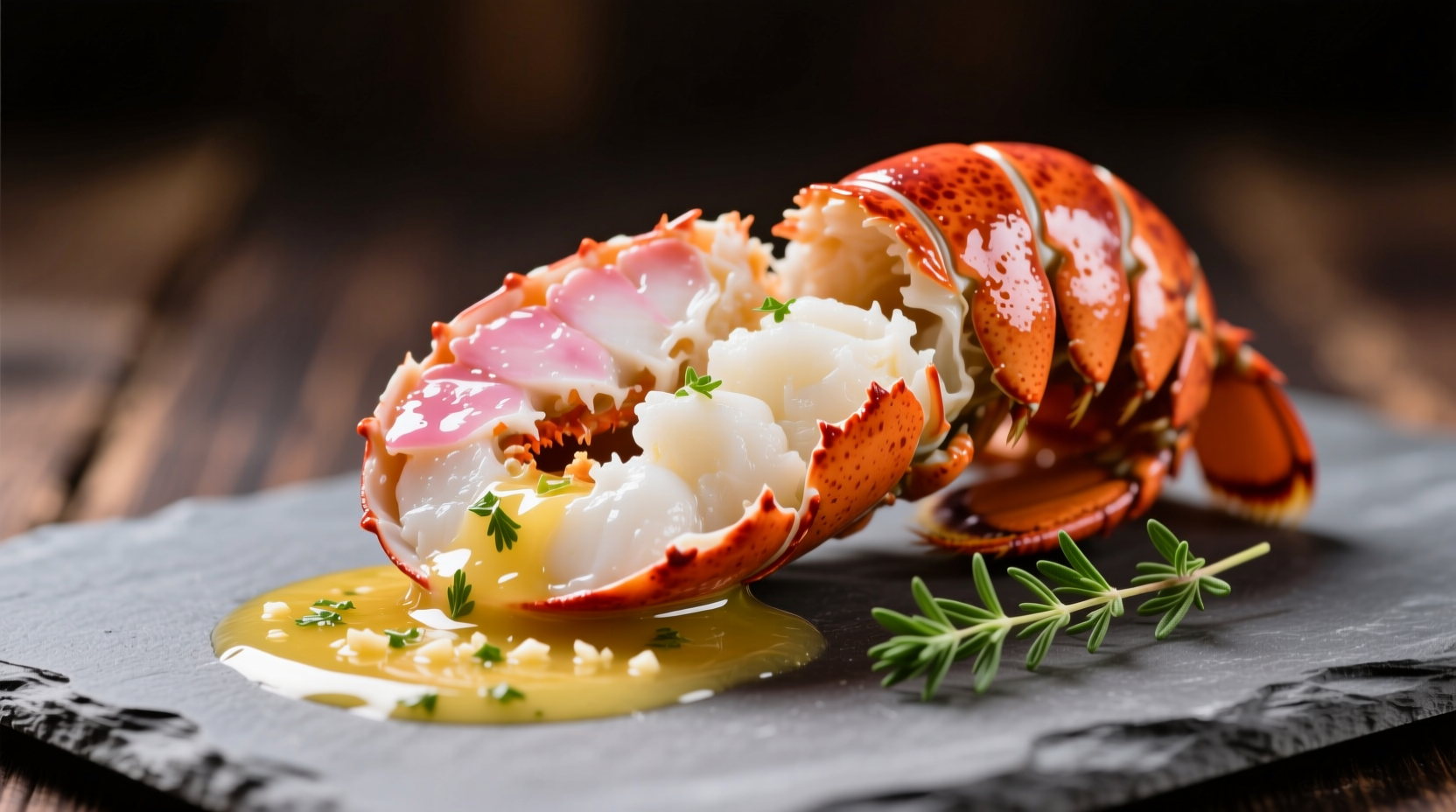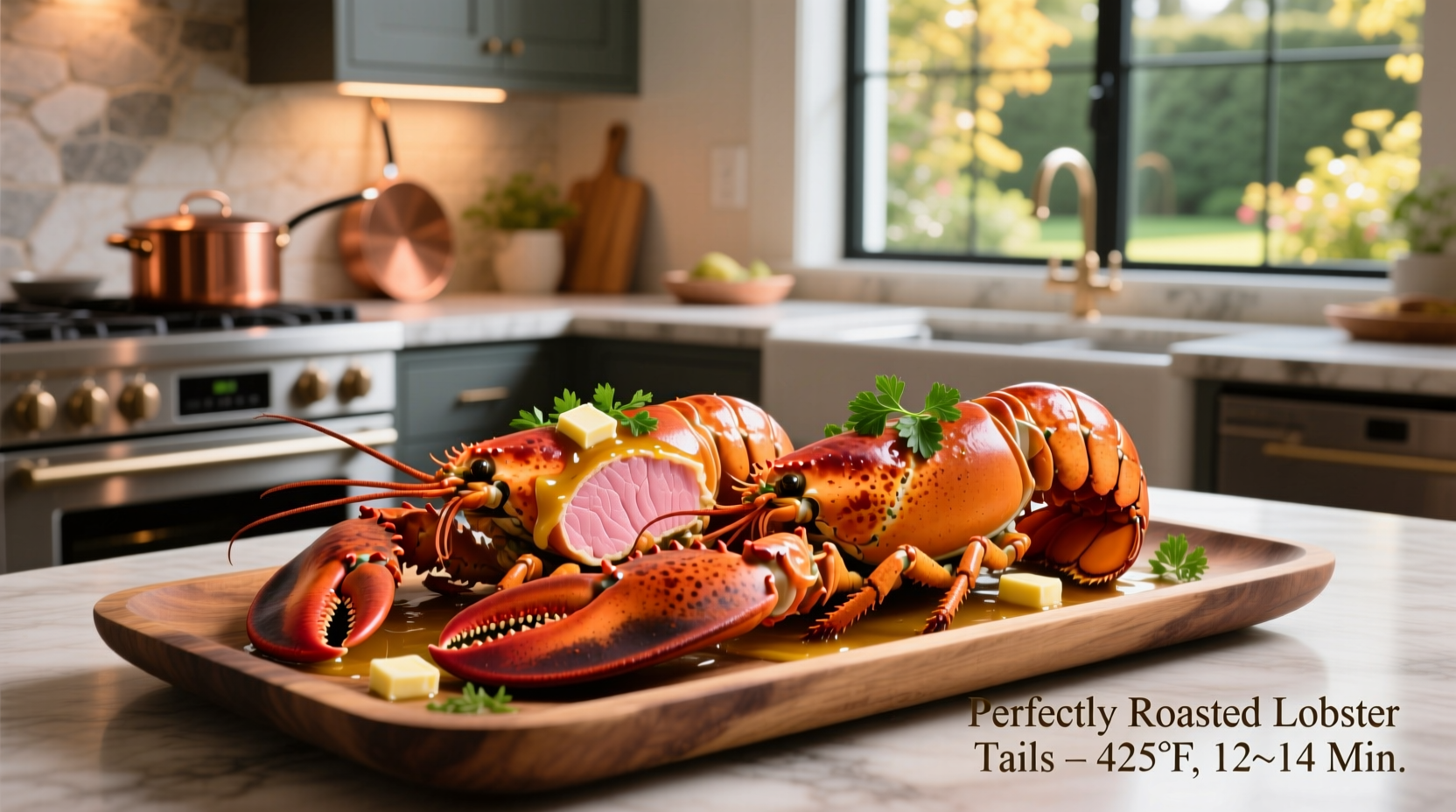Perfect Oven-Baked Lobster Tails: A Foolproof Guide
Cooking lobster tails in the oven delivers restaurant-quality results with minimal effort. Unlike boiling, which can make lobster rubbery, the oven's dry heat gently cooks the delicate meat while concentrating flavors. Whether you're preparing a special date night dinner or hosting a holiday feast, this method guarantees perfectly cooked lobster every time.Why Choose Oven-Baked Lobster Tails?
Many home cooks default to boiling lobster, but the oven method offers distinct advantages:
- Better flavor retention - No water dilution of natural sweetness
- Precise doneness control - Visual monitoring without constant checking
- Enhanced texture - Gentle heat prevents overcooking common with boiling
- Easy preparation - Minimal hands-on time compared to grilling
- Versatile finishing - Perfect canvas for garlic butter, herbs, or citrus glazes
Essential Preparation Steps
Proper preparation ensures your lobster tails cook evenly and safely:
- Thaw completely - If frozen, place sealed tails in refrigerator 24 hours before cooking
- Clean thoroughly - Rinse under cold water, removing any shell fragments
- Butterfly the tails - Use kitchen shears to cut lengthwise through top shell, stopping at tail fin
- Loosen the meat - Gently lift meat through slit, keeping attached at base
- Dry thoroughly - Pat with paper towels to ensure proper browning
| Lobster Tail Size | Recommended Oven Temp | Cooking Time | Internal Temp |
|---|---|---|---|
| 4-6 oz (small) | 400°F | 8-10 minutes | 135-140°F |
| 6-8 oz (medium) | 375°F | 10-12 minutes | 135-140°F |
| 8-10 oz (large) | 350°F | 12-15 minutes | 135-140°F |
| 10+ oz (jumbo) | 350°F | 15-18 minutes | 135-140°F |
According to the U.S. Food and Drug Administration, seafood should reach a minimum internal temperature of 145°F or until the flesh is opaque and flakes easily. However, lobster continues cooking after removal from oven, so pulling at 140°F prevents overcooking.
Seasoning Options for Maximum Flavor
Keep it simple with classic preparations or experiment with gourmet variations:
Classic Garlic Butter Preparation
Mix 4 tablespoons melted butter with 2 minced garlic cloves, 1 tablespoon lemon juice, and 1 teaspoon fresh parsley. Brush generously over exposed meat before baking.
Alternative Flavor Profiles
- Lemon-Herb - Olive oil, lemon zest, thyme, and tarragon
- Spicy Cajun - Paprika, cayenne, garlic powder, and onion powder
- Asian-Inspired - Sesame oil, ginger, and scallions

Step-by-Step Baking Process
- Preheat oven to recommended temperature based on tail size
- Prepare baking sheet with foil or parchment paper for easy cleanup
- Arrange tails meat-side up with adequate space between them
- Season generously with chosen preparation, allowing flavors to penetrate
- Bake according to size - Check at minimum time using instant-read thermometer
- Finish under broiler (optional) - 1-2 minutes for golden top
- Rest 3-5 minutes before serving to allow juices to redistribute
Visual Doneness Indicators
While thermometers provide accuracy, these visual cues confirm perfect cooking:
- Meat turns from translucent to opaque white
- Shell changes from bluish-gray to bright red
- Meat slightly curls at edges
- No translucent areas remain when checking center
When Oven Method Outperforms Alternatives
The oven-baking technique shines in specific scenarios:
- Cold weather cooking - No need to heat outdoor grill
- Multiple tails preparation - More consistent results than stovetop methods
- Indoor entertaining - Minimal odor compared to boiling
- Delicate flavor preservation - Better than high-heat grilling for subtle sweetness
However, avoid oven-baking when you need extremely quick preparation (under 10 minutes) or when seeking distinct grill marks and smoky flavor.
Common Mistakes to Avoid
- Overcrowding the pan - Causes steaming instead of baking
- Skipping the butterflying step - Leads to uneven cooking
- Using high heat for large tails - Results in tough exterior with raw center
- Not drying the meat - Prevents proper browning and flavor development
- Overcooking by 2+ minutes - Transforms tender meat into rubbery texture
Serving Suggestions for Restaurant-Quality Presentation
Elevate your oven-baked lobster tails with these professional touches:
- Place on pre-warmed plates to maintain temperature
- Serve with lemon wedges and extra melted butter on the side
- Pair with light sides like asparagus, roasted potatoes, or fresh salad
- Consider a complementary wine pairing - Chardonnay or Champagne
- Garnish with fresh herbs just before serving
Troubleshooting Common Issues
Problem: Lobster meat appears stringy or tough
Solution: You've overcooked by 3+ minutes. Next time, check 2 minutes earlier and remember carryover cooking.
Problem: Meat remains translucent in center
Solution: Return to oven for 2-minute increments until reaching 140°F internal temperature.
Problem: Shell has blackened areas
Solution: Broiler was too close or butter mixture contained sugar that caramelized excessively.











 浙公网安备
33010002000092号
浙公网安备
33010002000092号 浙B2-20120091-4
浙B2-20120091-4